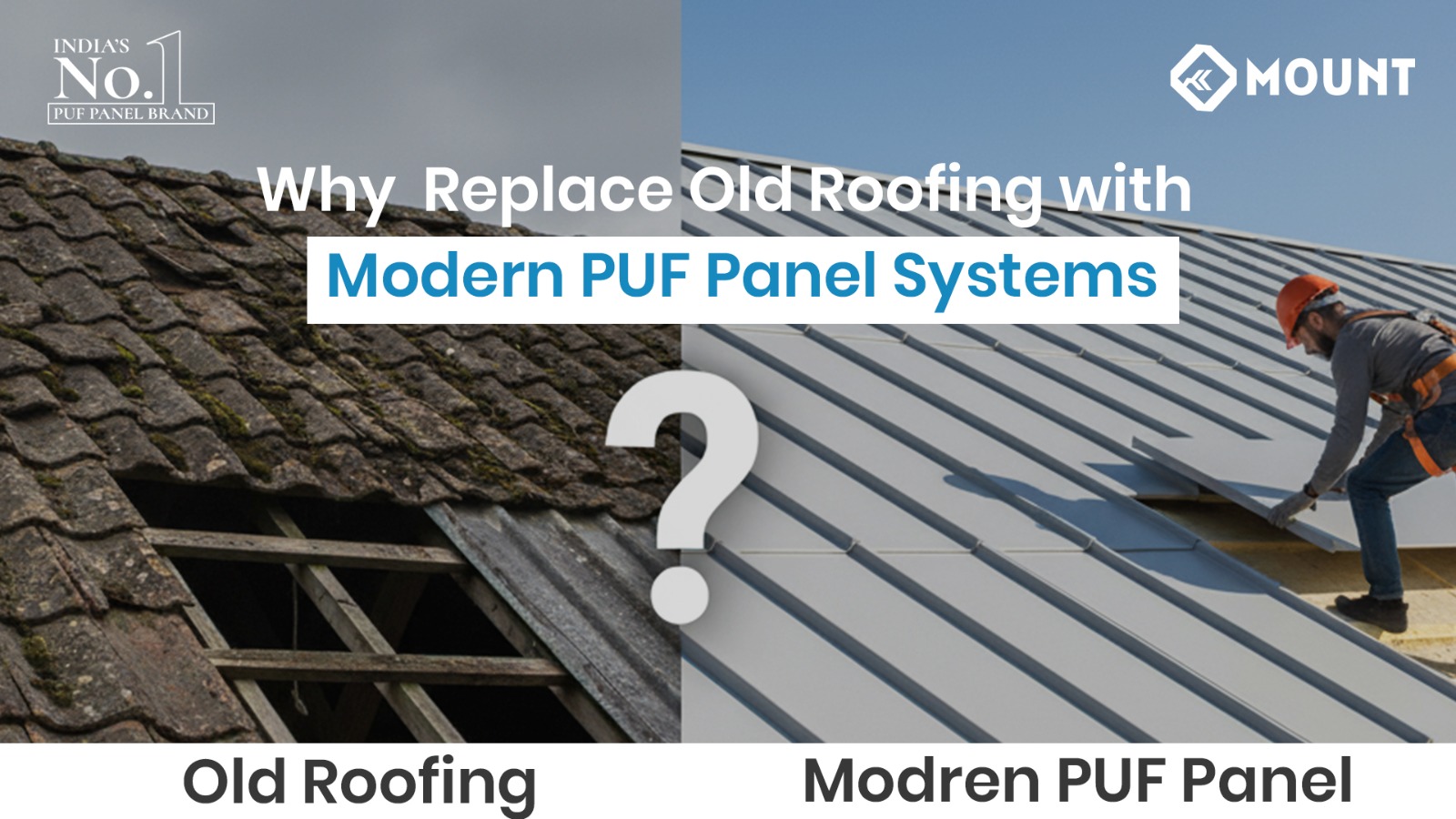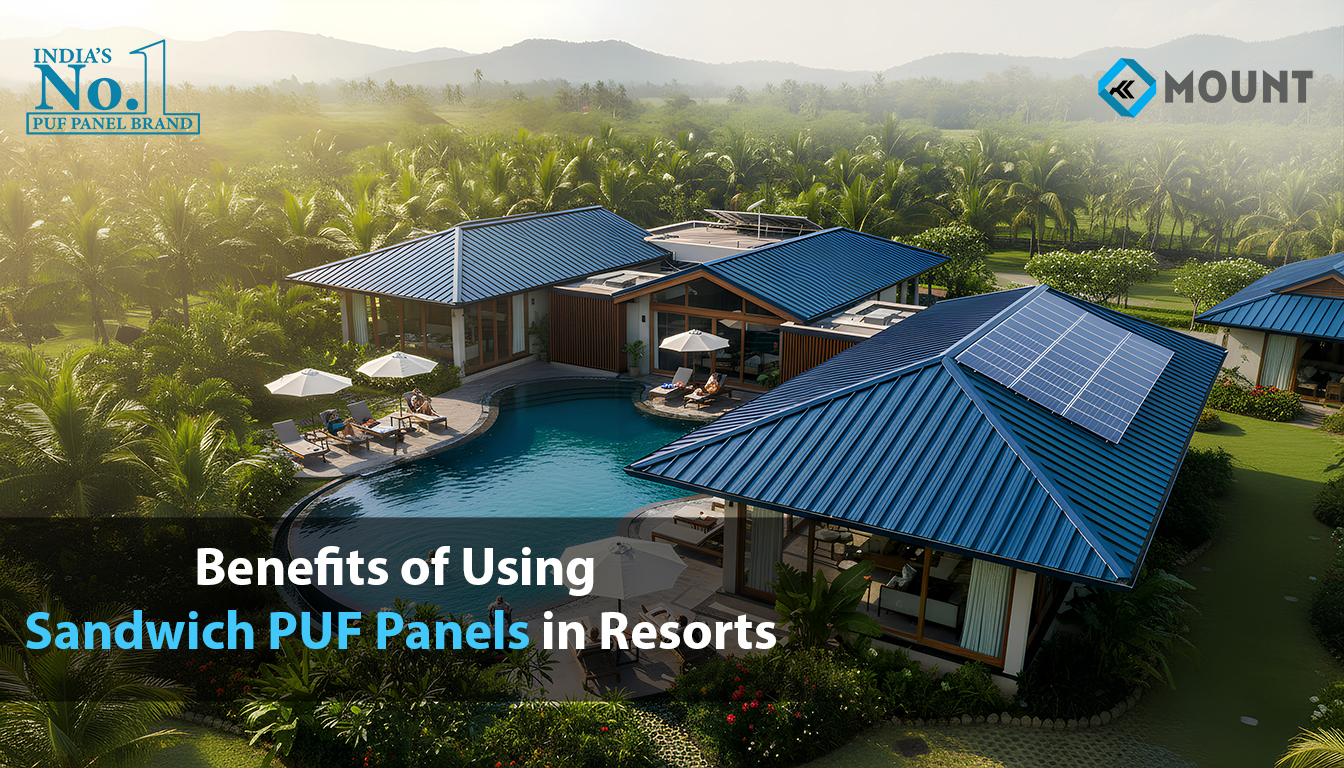
How PUF Roofing Panels Protect Buildings During Heavy Monsoons
When monsoon clouds gather and torrential rains begin their relentless downpour, building owners across India face a critical question: Will my roof hold up? Heavy monsoons impose continuous stress on roofing systems, far beyond the impact of water alone. exposing weaknesses that can lead to leaks, structural damage, and costly repairs. For regions experiencing intense rainfall, choosing the right roofing solution goes beyond shelter, it’s about long-term protection and peace of mind. PUF roofing panels have emerged as a superior choice for monsoon-prone areas, offering waterproofing capabilities, structural integrity, and thermal efficiency that traditional materials cannot match.
Understanding PUF Panel Construction and Monsoon Resistance
The innovative sandwich construction features two metal sheets with a rigid polyurethane foam core between them. This design creates a unified roofing system that addresses multiple challenges simultaneously. PUF panels feature a closed-cell structure that prevents water penetration, making them exceptionally effective during extended monsoon periods when rainfall persists for days. Unlike open-cell materials that absorb moisture, closed-cell foam creates millions of tiny, sealed air pockets that water cannot infiltrate.
The seamless integration during manufacturing creates a monolithic structure without gaps where water might enter. Standard PUF panel thickness ranges from 20mm to 100mm, with thicker options available for specialised applications requiring enhanced insulation or load-bearing capacity. Mount offers premium quality panels engineered specifically for Indian monsoon conditions, ensuring reliable performance when you need it most.
Superior Waterproofing That Keeps Interiors Completely Dry
Monsoon protection begins with preventing water entry, and this is where these advanced roofing solutions demonstrate their greatest strength. The impermeable polyurethane core means that even if minor surface damage occurs to the exterior metal layer, water cannot wick through the panel to reach interior spaces. Traditional roofing materials like concrete or metal sheets without proper insulation often develop condensation problems during monsoons, but Mount’s advanced sandwich PUF panels eliminate this issue entirely.
The interlocking joint system creates weather-tight seals between adjacent sections. These cam-lock or tongue-and-groove connections prevent water from seeping through panel joints, which is often the weakest point in conventional roofing systems. When properly installed by experienced professionals, these connections remain secure even during cyclonic conditions. Buildings protected with quality roof PUF panels maintain dry interiors throughout the monsoon season, preventing moisture-related problems that plague many structures, including mould growth, electrical hazards, and structural deterioration.
Structural Strength Without Excessive Weight
One advantage that surprises many building owners is how these panels combine remarkable strength with minimal weight. Significantly lighter than concrete slabs or traditional metal roofing with separate insulation layers, this reduced weight translates directly into lower structural requirements and reduced construction costs for the supporting framework.
Despite their lightweight nature, the sandwich construction offers impressive load-bearing capacity. PUF roof sheets can withstand the accumulated weight of heavy rainfall, resist wind uplift forces during storms, and support maintenance personnel walking on the roof for inspections or repairs. During monsoons, when roofs must endure the battering force of wind-driven rain, this structural resilience proves essential. The panels flex slightly to absorb impacts without cracking or developing stress fractures, then return to their original shape once the force subsides.
Thermal Insulation Benefits During and After Monsoons
While waterproofing captures immediate attention during monsoon season, the thermal insulation properties deliver year-round value that significantly impacts building performance and energy costs. The polyurethane foam core possesses one of the lowest thermal conductivity values among common insulation materials, with a K-value ranging from 0.019 to 0.026 W/mK depending on density.
This exceptional insulation keeps building interiors comfortable even as outdoor conditions fluctuate dramatically. During monsoons, when temperatures drop and humidity rises, the panels prevent heat loss from conditioned spaces, reducing the load on heating systems. Buildings with properly installed solutions can reduce cooling and heating energy consumption by 30-40% compared to conventional roofing systems. For commercial and industrial facilities with large roof areas, this translates into significant operational cost reductions that help offset the initial PUF panel cost within a few years.
Quick Installation Reduces Vulnerability Periods
Timing matters when installing or upgrading roofing systems in monsoon-prone regions. Traditional roofing construction methods often require weeks of work, during which the building remains vulnerable to unexpected rainfall. Mount’s panels offer a decisive advantage through rapid installation that minimises exposure to weather-related risks.
Since panels arrive at the construction site pre-manufactured to exact specifications, installation primarily involves positioning and securing panels rather than assembling multiple components. A skilled installation team from a reliable PUF panel dealer can typically complete a medium-sized commercial roof in days rather than weeks. This speed reduces labour costs while also shortening the period when the building interior is exposed to potential water damage.
Choosing the Right PUF Panel Specifications
Selecting appropriate specifications ensures optimal performance for specific building requirements and climate conditions. Thickness represents the most critical specification, with thicker panels providing enhanced insulation and structural strength. For monsoon-prone regions with moderate temperatures, 50mm to 75mm thickness typically suffices for most applications, while extreme climate zones may benefit from 100mm panels.
The metal face material and coating affect both durability and appearance. Pre-painted galvanised steel offers excellent corrosion resistance with a variety of colour options. Working with an established PUF panel manufacturer ensures access to quality products backed by warranties. Mount provides technical support for proper specification selection, helping building owners match panel characteristics to specific structural requirements and environmental conditions.
The PUF panel price varies based on thickness, metal face specifications, and coating options. However, comprehensive cost analysis reveals strong value when installation labour, energy savings, and minimal maintenance requirements are considered. For commercial buildings, the payback period typically ranges from 3-5 years, after which the continued energy savings represent pure cost reduction that benefits the building owner throughout the panel’s 20-25 year lifespan.
Conclusion
As climate patterns intensify and monsoon rainfall becomes increasingly unpredictable, protecting buildings with proven, reliable roofing systems grows more critical every year. Mount’s roofing solutions deliver comprehensive protection through their unique combination of waterproofing excellence, structural integrity, and thermal efficiency. The closed-cell polyurethane core prevents water penetration even during extended rainfall periods, while the lightweight yet strong sandwich construction reduces structural demands without compromising durability.
From warehouses to residential complexes, buildings across monsoon-prone regions benefit from the quick installation, minimal maintenance, and long-term performance that these panels provide. The initial investment in quality panels from established PUF panel manufacturers delivers returns through reduced energy costs, eliminated repair expenses, and the peace of mind that comes from knowing your building is truly protected when monsoon clouds gather on the horizon.
Frequently Asked Questions
Q: What is the ideal PUF panel thickness for monsoon-prone regions?
A: For monsoon-affected areas, a 50-75mm thickness provides excellent waterproofing and insulation. Extreme climates may require 100mm panels for enhanced protection and performance.
Q: How do PUF roofing panels compare in cost to traditional materials?
A: Initial costs are higher, but 30-40% energy savings, faster installation, and minimal maintenance create 3-5 year payback periods for commercial buildings.
Q: Can PUF roof sheets withstand cyclonic winds during severe monsoons?
A: Yes, properly installed panels with cam-lock joints and weather-sealing fasteners resist high wind uplift forces during cyclonic conditions effectively.
Q: Do sandwich PUF panels require special maintenance during the monsoon season?
A: Minimal maintenance needed. Annual pre-monsoon inspections, checking sealants, fasteners, and drainage systems, ensure continued protection throughout the season.


